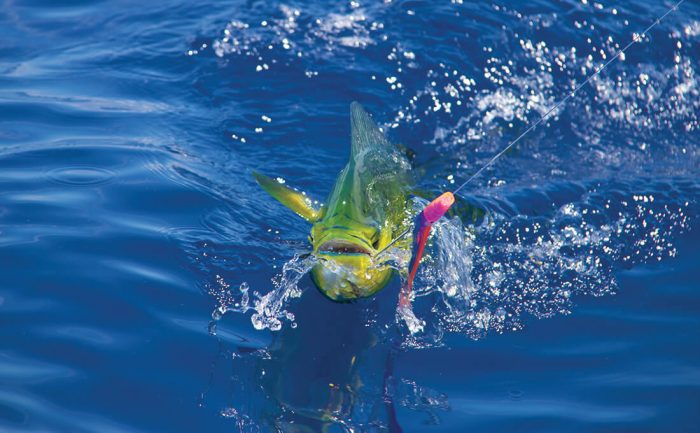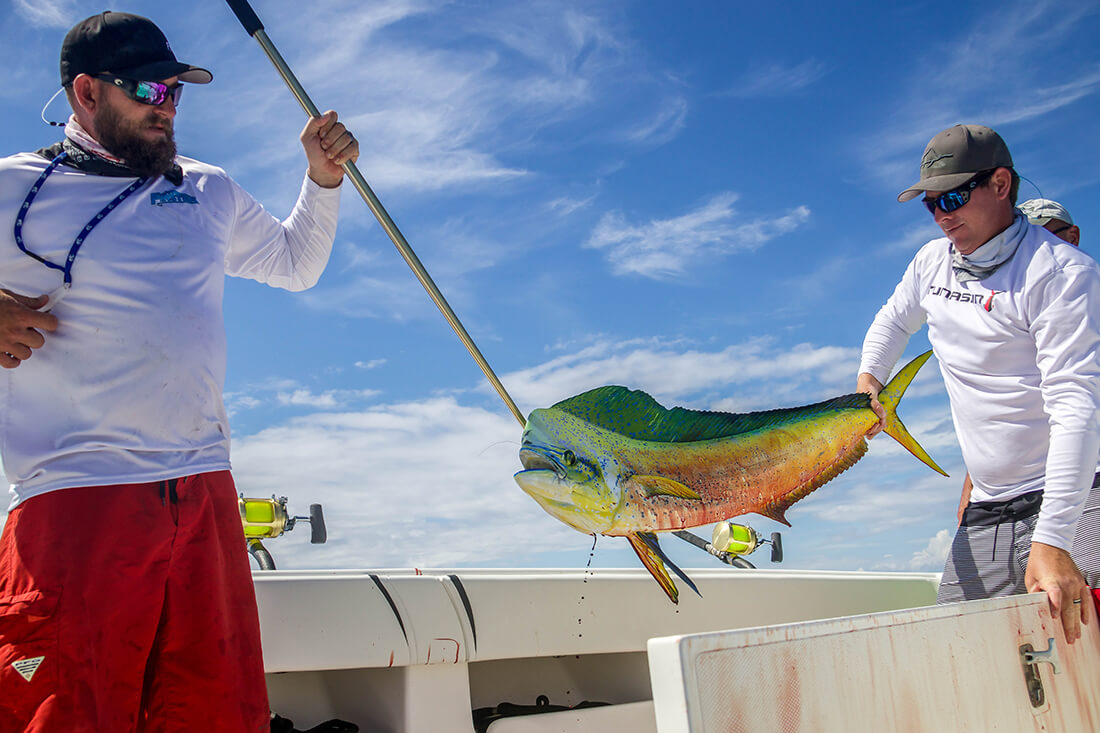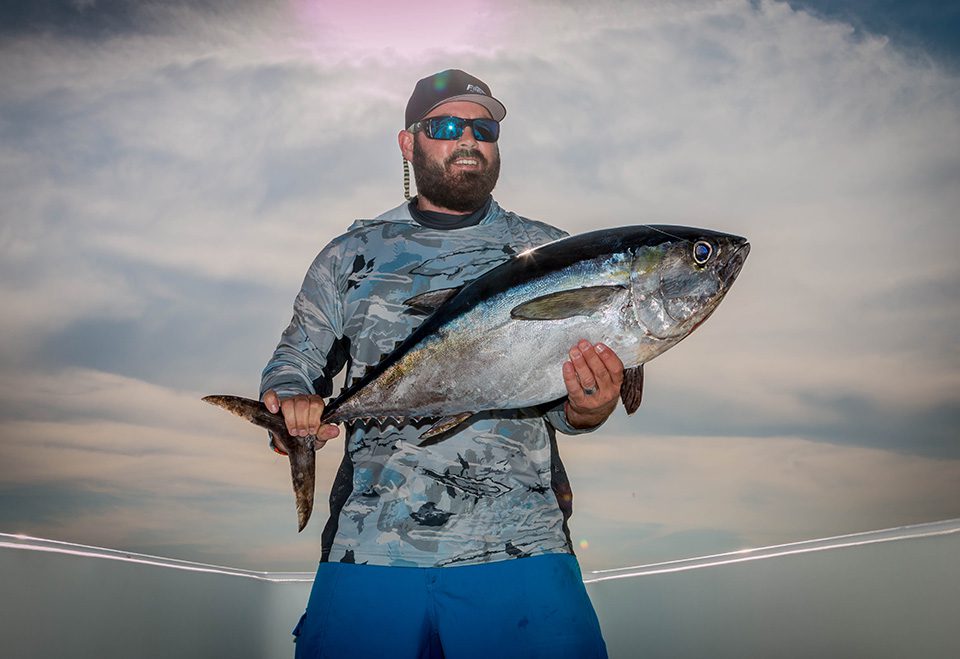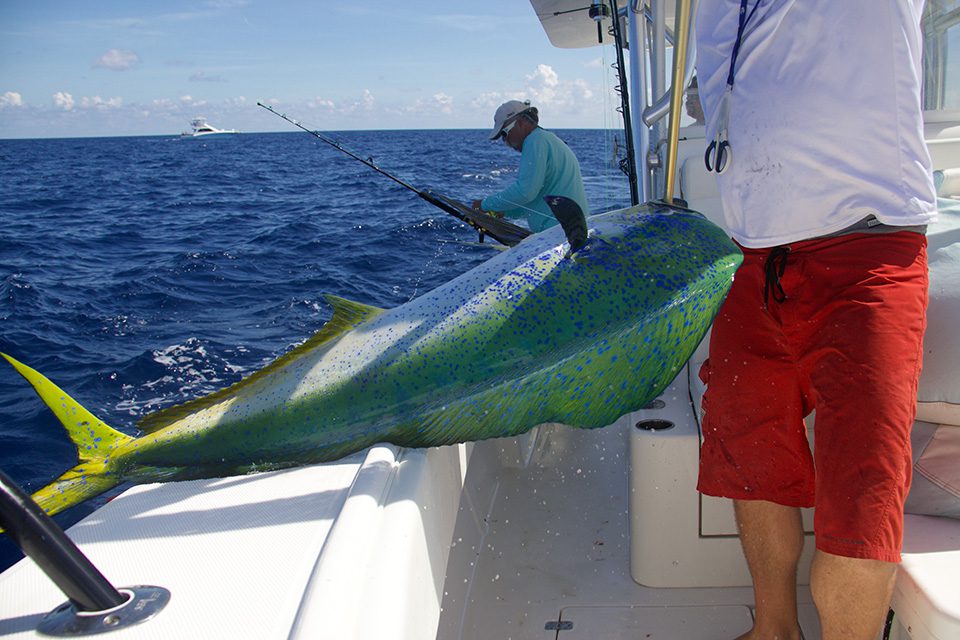For some anglers, the fishing trip of a lifetime is an annual event.
Team Finster, out of Fort Myers, Fla., fishes top offshore tournaments, but one of the highlights of their fishing year is an annual spring meat trip that coincides with the arrival of big yellowfin tuna in the Bahamas.

The trip starts with provisioning and bait. As charter captains, team members begin saving and freezing leftover bait from charter trips a month in advance because chumming is key. They prefer fishing live bait, so the livewell is loaded with pilchards and threadfins before they leave. Provisions and gear are crammed into every available hold before they set out on what should be a couple hour run in front of twin Mercury Verado 300s across the Gulf Stream to Carpenter’s condo in Port Lucaya, Freeport, Grand Bahama.
The crossing always takes longer than it should. It’s difficult for a boatload of anglers to pass up fish along the way.
“Last trip, we had all the fish boxes full before we even got there,” Milisci said. “We came upon a whole tree adrift with mahi all over it. They were good mahi, too, all gaffers.”
It’s a good thing there’s an ice machine at the condo. Even when cleaning fish at the dock, there is opportunity to put more meat on ice. Milisci said tarpon and big mutton snapper appear to clean up the scraps. Cooked whole and fresh, those snapper are fine eating.
The main event begins after checking in with customs and unloading.
“The fishing is right out front. It’s within 10 miles,” Milisci said. “You lose sight of land, and you’re in ’em.”
Tuna move constantly, and they move fast. Finding fish is a matter of finding birds on the radar. Huge groups of birds are typically found over bonito, so Team Finster is looking for smaller pockets of birds that are a giveaway for tuna. They never pass a frigatebird without checking it.
When fish are found, the boat is maneuvered in front of the anticipated direction of the school’s travel. The engines drop into neutral and heavy chumming begins with a month’s worth of frozen baitfish.
“The fish are on the surface. They’re coming up blasting baits, and the birds are diving on the bait they push up,” Milisci said. “Sometimes you’ll see fins coming up on your bait.”
When fishing in a maelstrom of 10- to 15-pound blackfin tuna and yellowfins weighing 30 to well over 100-pounds, it’s important to fish heavy gear. There are also sharks mixed in, and they will leave nothing but a fish head at the first hint of blood in the water. Anglers must crank hard and fast with 60w and 80w Penn Internationals spooled with 200-pound-test mono and 200- to 300-pound leaders. Anglers either reel fish in from the rod holder with bent-butt rods or fight them with a belt.
Tuna will eat dead bait, but the team prefers presenting pilchards and threads on a slack line until they run out of live bait. Milisci said the fish are smart enough to let a bait go if they feel the slightest amount of tension on the line, so that slack is important until a fish eats. Then it becomes a grueling race against the sharks.
The reward is almost immediate when a fish hits the deck. Wasabi and soy sauce are kept on-hand, and knives go to work while the rod-man catches his breath.
For more on Team Finster or to contact Zac Carpenter or Pete Milisci, see finsterfishing.com. To book an inshore trip with Milisci out of Fort Myers, go to www.pictureperfectcharters.com.




